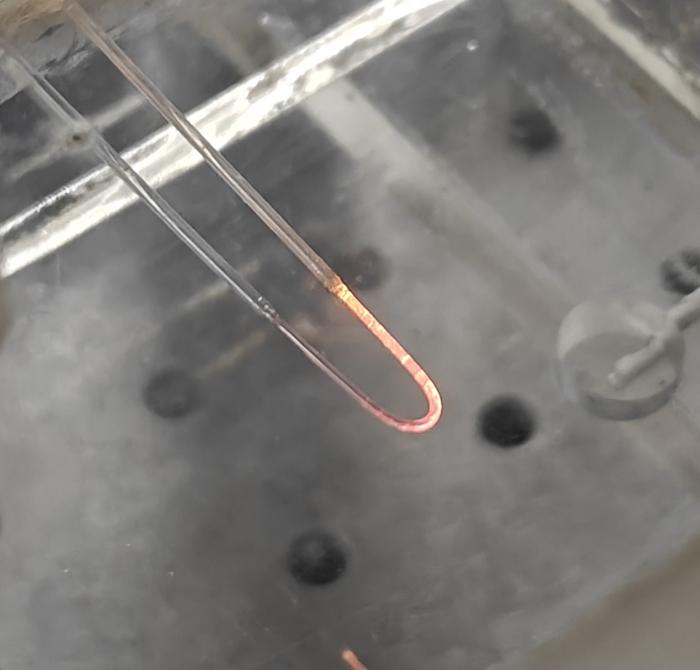Researchers have recently unveiled an innovative optical fiber sensor capable of detecting extremely low levels of arsenic in water. This groundbreaking development could revolutionize the way we monitor water quality, enhancing the ability of individuals and communities to detect harmful contaminants in their drinking water. This new sensor represents a significant step forward in environmental monitoring technologies and public health safeguards.
Arsenic contamination in water is a severe global issue, endangering the health of millions. The toxic element naturally leaches into groundwater from geological deposits, and human activities, such as mining and the use of arsenic-laden pesticides, exacerbate its presence. Long-term exposure to arsenic-contaminated water has been linked to serious health complications, including various cancers and arsenic poisoning. The urgency for affordable arsenic detection solutions has never been greater, and the new optical sensor could meet this critical demand.
Developed by researchers led by Sunil Khijwania from the Indian Institute of Technology Guwahati, the optical sensor utilizes advanced technology based on localized surface plasmon resonance. This method harnesses the unique properties of light and nanotechnology to provide fast and sensitive measurements. Impressively, the sensor is capable of detecting arsenic concentrations as low as 0.09 parts per billion (ppb), which is significantly below the World Health Organization’s maximum permissible limit of 10 ppb.
One of the sensor’s most striking features is its speed; it delivers results in just half a second. This rapid detection capability allows for immediate assessment, making it much easier for users to ensure the safety of their water supply. Furthermore, the sensor is designed for reusability and demonstrates high stability over time, making it a practical option for both household use and larger scale applications in areas where arsenic contamination is common.
In contrast to traditional spectroscopic techniques that require complex equipment and trained personnel, this new sensor is specially designed to be user-friendly. Its compact design combined with cost effectiveness paves the way for more widespread use among non-experts. By enabling everyday individuals to conduct their own water quality tests, this sensor could empower communities and promote proactive health measures.
The technology behind this sensor involves coating the optical fiber’s core with gold nanoparticles and a specialized alumina-graphene oxide nanocomposite that selectively binds to arsenic ions. As light travels through the fiber, an evanescent wave extends into the environment due to the method of total internal reflection. When arsenic is present, it interacts with the nanoparticles, causing a measurable shift in resonance wavelength, a hallmark of the sensor’s high sensitivity.
Throughout the research and testing phases, scientists compared measurements taken with the new sensor to those obtained using the widely respected inductively coupled plasma mass spectrometry (ICP-MS). The results showed nearly identical findings with less than 5% difference, establishing the sensor’s reliability in real-world applications. This remarkable accuracy affirms that the device could serve as an effective alternative for arsenic detection in various environments.
The transition from laboratory experiments to real-life applications underscores the relevance of this technology in addressing public health concerns. However, researchers acknowledge that further optimization in the optical source and detection components is required to enhance accessibility and affordability. Such advancements would eliminate barriers to widespread implementation, bringing the benefits of this innovative detection system to a global audience.
In addition to monitoring arsenic levels, there’s potential for adapting the sensor technology for detecting other contaminants. Researchers are optimistic that this platform can be further developed into comprehensive environmental monitoring tools that cater to a variety of pollutants. As the technology evolves, it could become an essential component in protecting public health from various environmental threats.
By facilitating easy access to water quality testing, this research contributes significantly to public health and safety. With the emergence of such user-friendly solutions, communities can adopt proactive measures to ensure a safer drinking water supply. This innovation not only has the potential to impact individual households but also could influence policy and regulatory decisions related to water safety.
As water quality continues to be a pressing global concern, advancements like this optical fiber sensor play a crucial role in promoting a culture of safety and awareness. Researchers are hopeful that future developments will lead to even more effective monitoring solutions that can be deployed in diverse environments.
The promise of this sensor extends beyond the laboratory: it stands as a testament to the power of scientific innovation in solving urgent public health challenges. With continued research and development, this technology could become indispensable in the fight against arsenic contamination and similar environmental issues, potentially saving countless lives in the process.
In summary, the introduction of a low-cost, easy-to-use optical fiber sensor designed for real-time arsenic detection has far-reaching implications. It empowers individuals and communities to be proactive in safeguarding their water quality, ultimately contributing to better health outcomes and fostering a greater awareness of environmental issues.
Subject of Research: Optical fiber sensor for arsenic detection
Article Title: Localized Surface Plasmon Resonance based Novel Optical Fiber Arsenic Ion Sensor Employing Al2O3/GO Nanocomposite
News Publication Date: October 2023
Web References: Optica Publishing Group, Indian Institute of Technology Guwahati
References: F. Banoo, S. K. Khijwania, “Localized Surface Plasmon Resonance based Novel Optical Fiber Arsenic Ion Sensor Employing Al2O3/GO Nanocomposite,” Applied Optics, 64, 1019-1027 (2025). DOI: 10.1364/AO.544358
Image Credits: Sunil Khijwania, Indian Institute of Technology Guwahati
Keywords
Environmental monitoring, Arsenic detection, Optical sensors, Public health, Nanotechnology, Water quality, Localized surface plasmon resonance, Fiber optics.
Tags: advancements in environmental sensor technologyaffordable water quality testing methodsarsenic detection in drinking waterenvironmental monitoring innovationsgroundwater contamination solutionshealth risks of arsenic exposureIndian Institute of Technology research developmentslocalized surface plasmon resonance applicationsnanotechnology in water testingoptical fiber sensor technologypublic health and water safetysensitive arsenic measurement techniques





